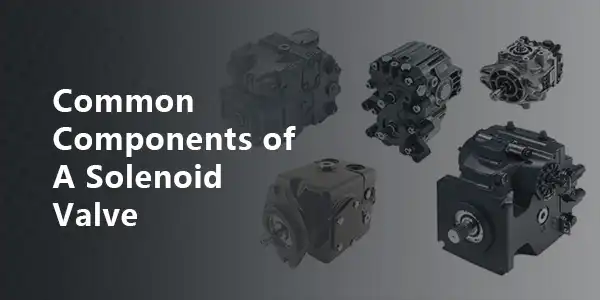What Are the Common Components of A Solenoid Valve?
What does a solenoid valve do?
Solenoid valve is an electromechanically operated valve, which is the most commonly used control element in fluidics and has a wide range of applications. They are responsible for closing, releasing, metering, dispensing or mixing fluids. Solenoids provide fast and safe switching, which are characterized by high reliability, long service life, good media compatibility of materials used, low control power, and compact design. The fuel shut off solenoid (or engine stop solenoid) is universal in construction equipment. Valves can use a two-port design to regulate flow, or a three- or more-port design to switch flow between ports. There are different types of engine solenoid valve, and they differ in the characteristics of the current used, the strength of the magnetic field produced, the mechanism used to regulate the fluid, and the type and characteristics of the controlled fluid.
What are the common components of a solenoid valve?
The common components of a solenoid valve is solenoid sub-assembly (including retaining clip,
solenoid coil, core tube, plugnut, shading coil, core spring, core), core tube-bonnet seal, bonnet (or cover), bonnet-diaphragm-body seal, hanger spring, backup washer, diaphragm, disk, and valve body. Here we will introduce the core and the core tube in details.
Core
The core, also called the plunger or armature, is the magnetic assembly that moves when the solenoid is energized. The core is coaxial with the solenoid. The movement of the core creates or breaks the seal that controls fluid movement. When the coil is not energized, the spring will hold the core in its normal position.
Core tube
The core tube, also called armature tube, plunger tube, engine solenoid valve tube, sleeve, guide assembly, contains and guides the core. It also retains the valve plug and possibly seals off fluid. In order to optimize the movement of the core, the core tube needs to be non-magnetic. If the core tube is magnetic, then it will provide a shunt path for the magnetic field lines. In some designs, the core tube is a closed metal shell created by deep drawing. This design simplifies sealing issues since fluid cannot escape the housing, but it also increases the magnetic circuit resistance as the magnetic circuit must travel through the thickness of the core tube twice: once near the insert and once in the core tube nearby. In some other designs, instead of a closed core tube, it is an open tube that slides over one end of the plug. To retain the insert, the tube may be crimped onto the insert. There is an o-ring seal between the tube and the plug to prevent fluid leakage. The solenoid coil consists of many turns of copper wire surrounding the core tube and inducing motion of the core. Coils are usually encapsulated with epoxy. The coil also has an iron frame, providing a low magnetic circuit resistance.
 Track Your Order
Track Your Order




